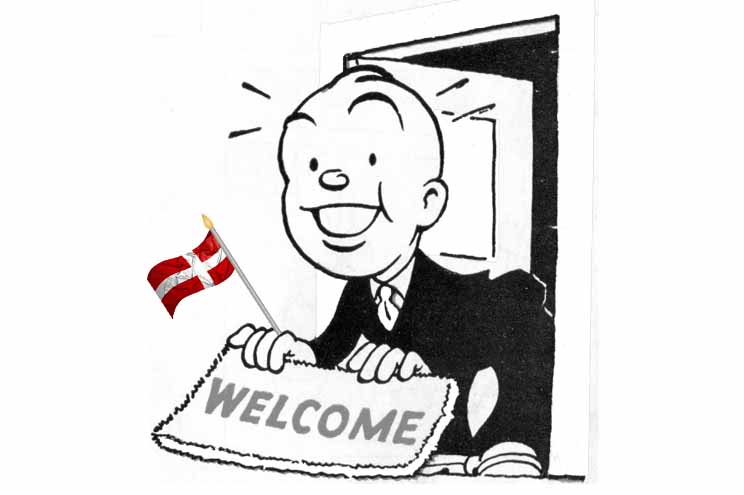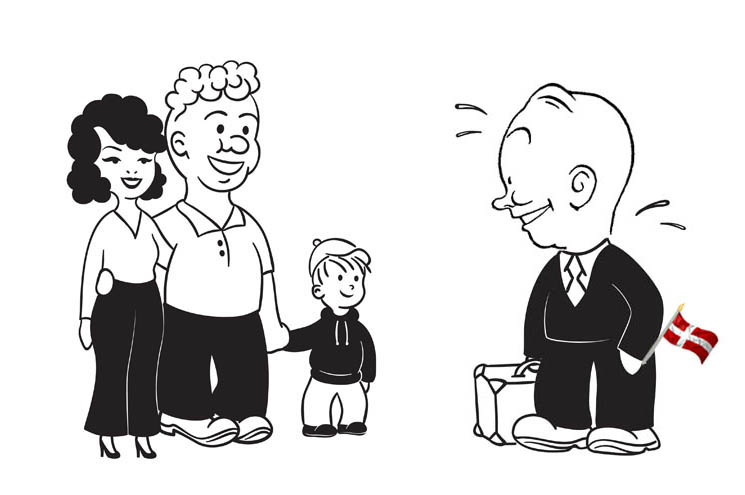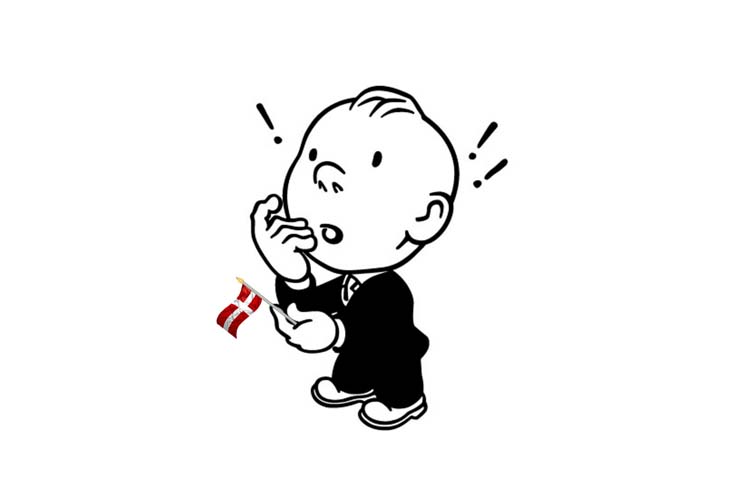Fall is one of my favorite times of year, because it is time for one of my favorite types of speaking engagement – introducing Denmark to some of the smart, motivated young people arriving from around the world to study at Danish universities.
The university people have wisely decided that another foreigner might be best suited to explain some of the quirks of Danish culture when welcoming newcomers to Denmark.
So since the publication of my first book, How to Live in Denmark, I’ve been speaking regularly to audiences of new arrivals, and I probably learn as much from them as they learn from me.
What Danes are most proud of
One of the things I’ve learned is that the aspects of Danish culture that the Danes are most proud of can be troublesome for newcomers.
For example, the Danes are proud of their egalitarian society and informality. But this can be daunting to someone who has grown up in a more stratified, hierarchical society where titles are important – like China, or India. Or Germany.
The idea that professors, doctors, and prime ministers should be called by their first names can be uncomfortable for newly-arrived students who have been raised to honor seniority and position.
In one post-speech Q&A session – the type that is usually marked by pointed questions about how to successfully date a Dane – a Nepalese student stood up and instead asked me “How do we show respect to the elderly in Denmark?”
In Nepal, he explained, there was a virtual treasure chest of words, customs, and means of address designed to honor senior citizens, but he’d been unable to figure out how to do this in Denmark, where he was shocked to find older people being called by their first names.
That was a tough one for me.
“The elderly want to be called by their first names in Denmark,” I ventured, but I’m not sure he was convinced.
Discarding the formal pronoun
I’ve also had the sad task of telling foreigners who have taken the time to learn a little Danish that they must throw Fru, Herr, and Frøkken in the trash, never to be taken out again.
This is also true of the formal pronoun De, the equivalent of the German Sie, the Spanish Usted, or the French Vous.
These formalities have mostly died out in Denmark.
That’s unless the newcomers get a chance to meet sixth-in-line-to-the-throne Prince Joachim, who reportedly insists on them, although his older brother, first-in-line-to-the-throne Crown Prince Frederik, does not.
To be fair, “De” is making a minor comeback among the employees of fancy grocery stores, which seem to think it is a sign of excellent customer service. (Would ‘De’ like a register receipt? Are ‘De’ a member of our loyalty program?)
Customer service is tricky
Customer service is always a tricky subject in Denmark, where the extreme commitment to total equality can mean nobody really wants to serve anybody else.
This can result in unenthusiastic, unengaged, or downright sour interactions with Danish customer service personnel, something even the Danes complain about.
(The cheerful Swedish service personnel who come over the Øresund Bridge to work in Copenhagen are much admired.)
That said, the Danes would have little patience for the aggressive salesmanship seen many other places in the world.
They don’t like to be sold products – their least favorite thing is a pushy salesperson. When they enter a shop, they like to be left alone until they’ve chosen what they want, or until they approach the salesperson with a specific question.
This confuses newcomers, who enter a shop and think they are being ignored because they are foreign, dark-skinned, or wear a hijab. I explain to them that everyone gets ignored, and that is how the Danes like it.
Angry about flag culture
Speaking of my fellow Americans, they can be the most tiresome of newcomers, or at least some of them can be. Those with a strong left-wing political bent often believe that they have been set off into the world to spread the gospel of woke, much like 19th-century missionaries bent on converting indigenous peoples to Calvinism.
One thing that irks these modern-day missionaries is the prominent display of the Danish flag. They compare it to the display of other national flags, which they find right-wing and racist, and don’t understand why the Dannebrog shows up on Christmas trees, party invitations, and birthday cakes.
“I mean, we would never display the US flag back home, except of course ironically,” one leftish American told me.
But the Danes like their flag, which according to legend is the oldest continuously in use anywhere in the world. And displaying it, whether in cloth, paper, or frosting form, is an important part of Danish birthday culture.
Danish birthdays are important
Danish birthdays are some of the most important in the world; few people of any age let theirs pass by without some kind of small celebration.
In Denmark you provide the cake and you buy your friends drinks to celebrate your birthday. In many countries it’s the other way around, but waiting and hoping for your Danish friends to buy you a cake can result in a sad, lonely day.
When a friend has an ordinary birthday in Denmark, you’re not required to buy a card or give a gift. Just showing up to enjoy the cake or beverages your friend has provided is enough, unless of course it’s a “round birthday.”
Round birthdays – when someone turns 30, 40, 50, 60, 70, 80, or 90 – are a big deal in Denmark. Elaborate parties are thrown, with invitations issued to friends and family members who haven’t been seen for years. If a Danish friend invites you to his or her “round birthday” event, this is a deeply-felt compliment, and you should dust off your finest attire and go.
Not all foreigners receive the advance warning about “round birthdays” though.
One Indonesian fellow told me he had happily attended a Danish friend’s 27th, 28th, and 29th birthday wearing jeans and a T-shirt and bringing nothing but a case of beer under his arm.
He did the same for the friend’s 30th birthday – only to find himself surrounded by cousins and aunties and old school friends in elaborate dresses and crisp business suits.
It’s always good to get a little training on Danish cultural quirks, even if it’s only from another foreigner.
This column originally ran in the Danish tabloid BT on August 27, 2019.
Buy Kay’s books about Denmark on Amazon, Saxo, Google Books, Apple Books, Barnes & Noble Nook, or via our webshop.
Image mashup copyright Kay Xander Mellish 2025
Read also:
Tips for living with a Danish family





